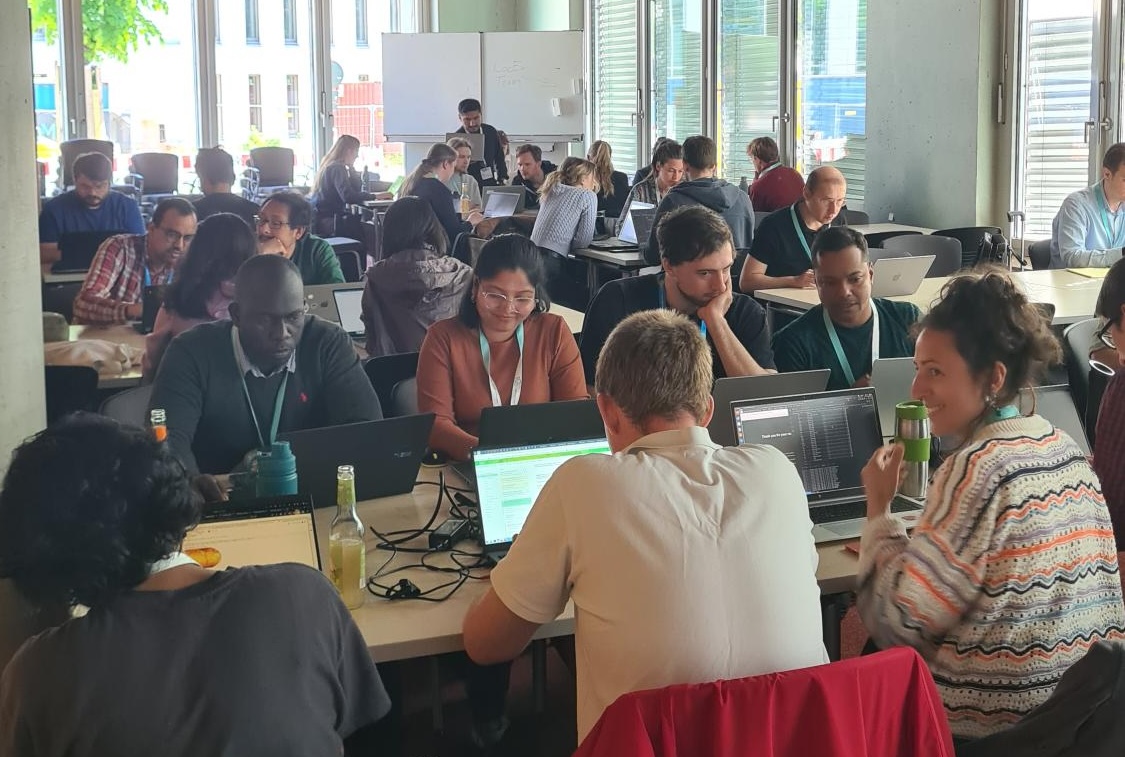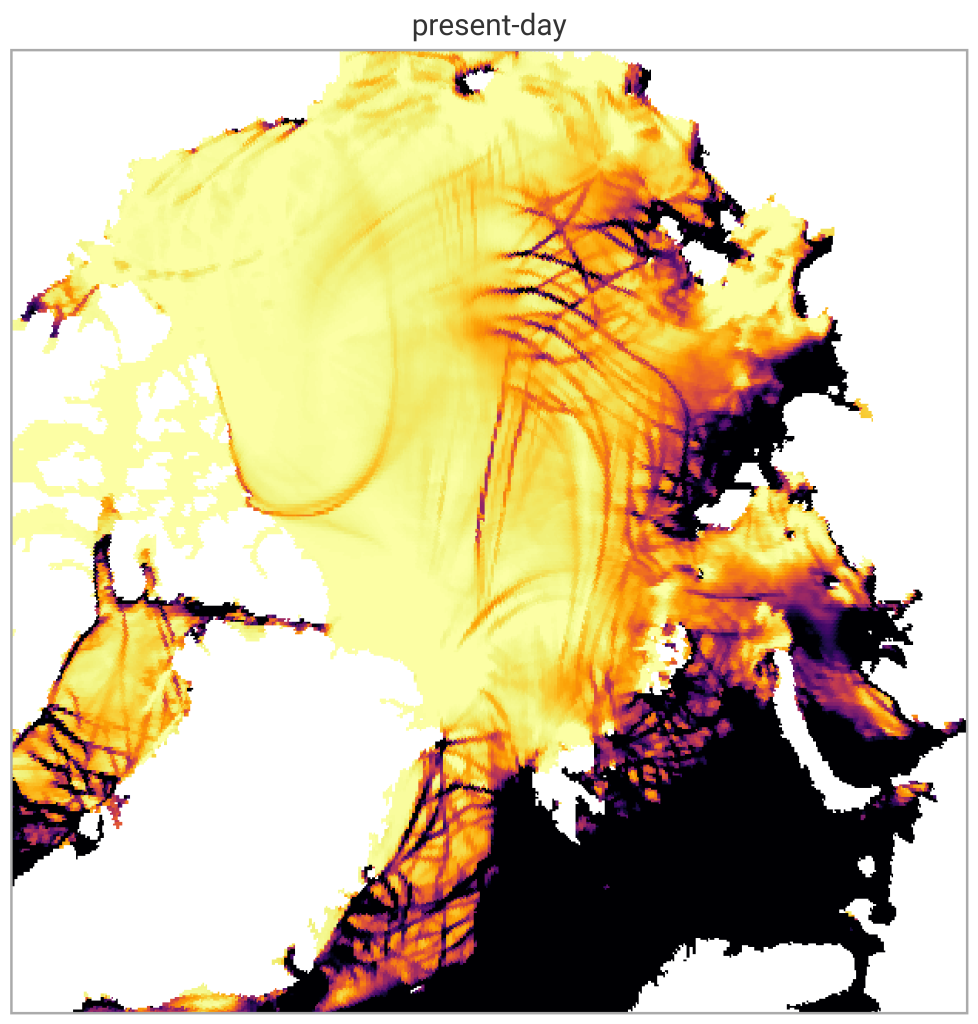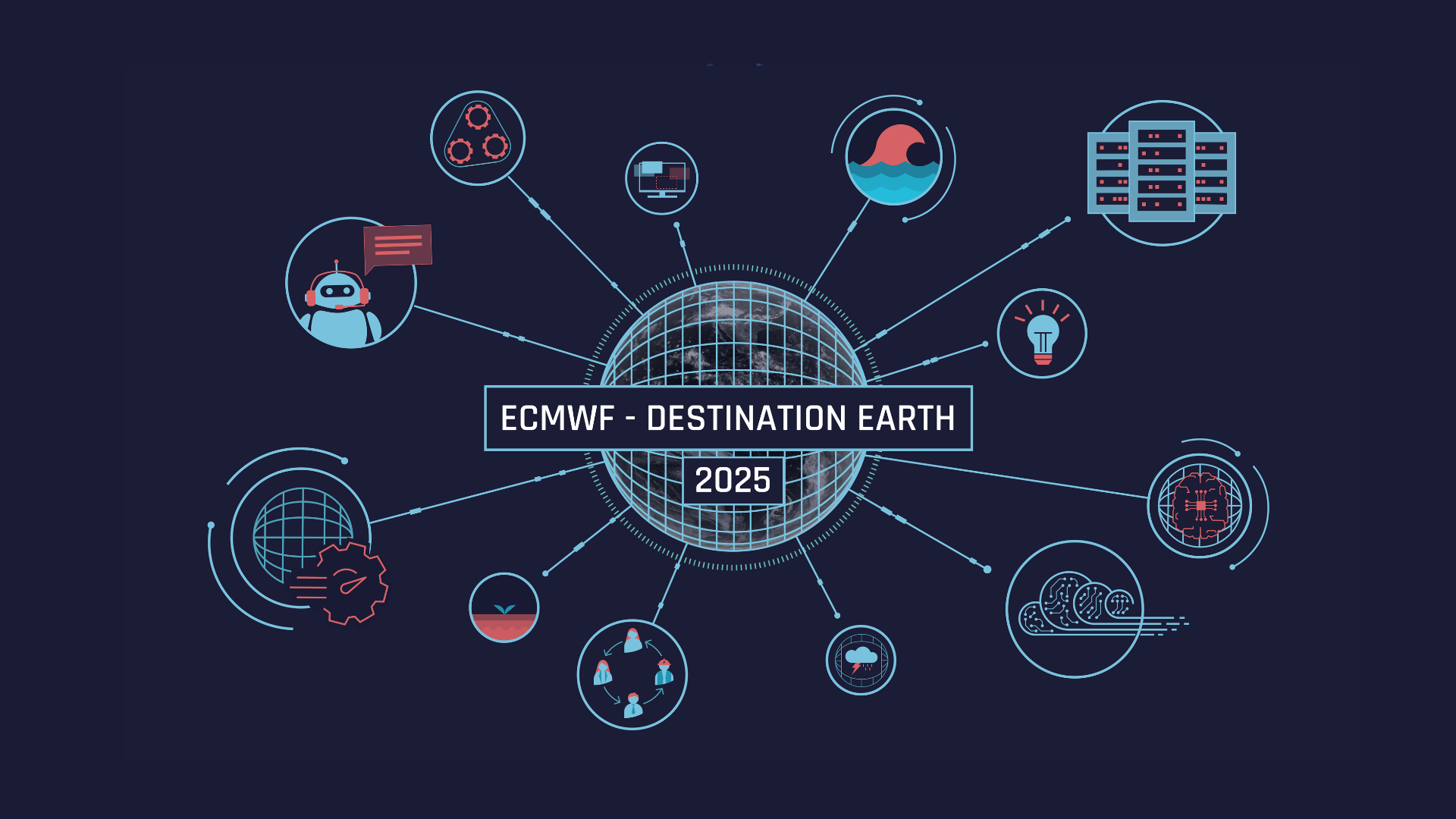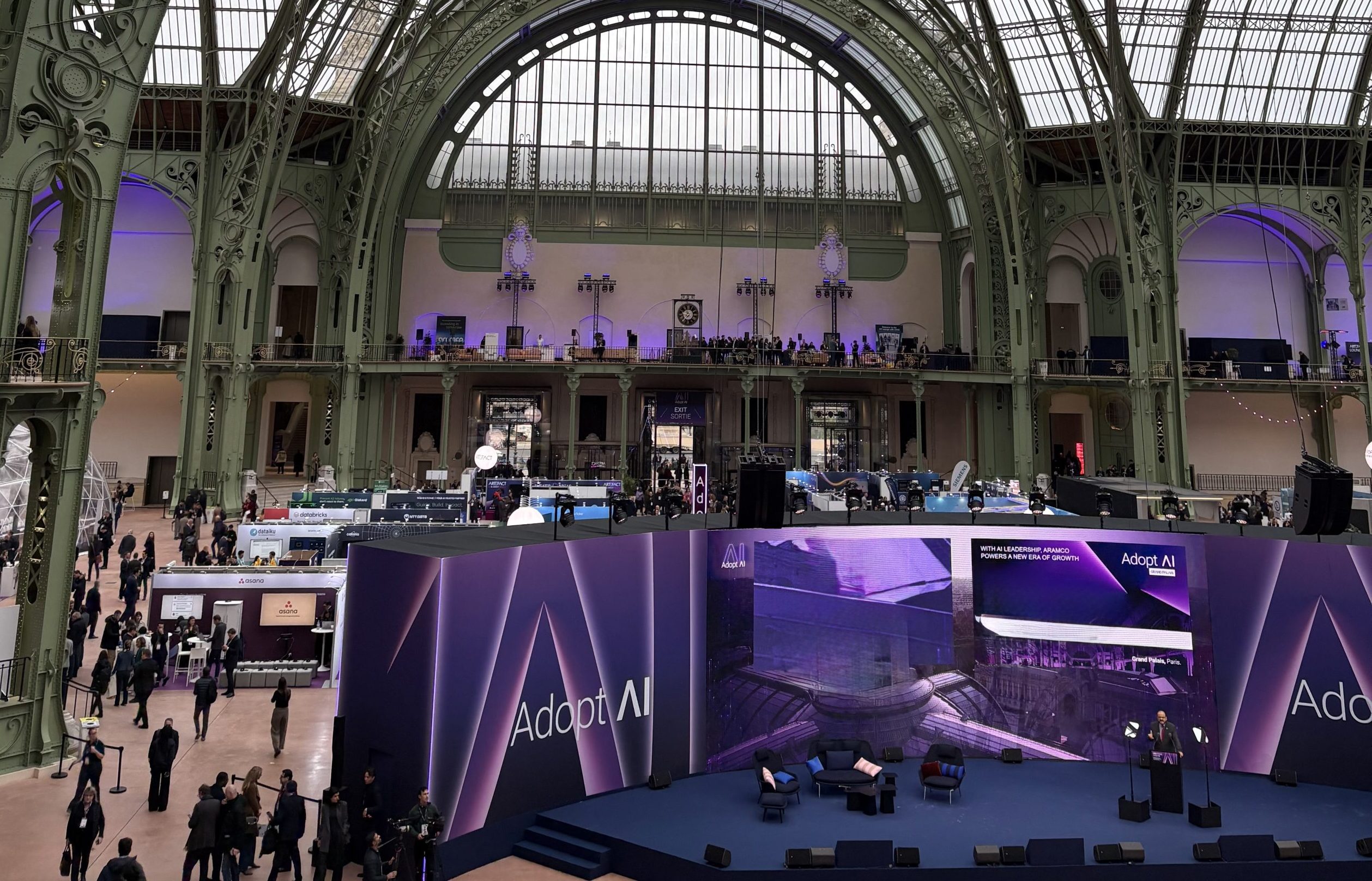
From 13–17 May 2025, research groups from around the world came together at 10 different hubs around the globe (“nodes”) for the global km-scale hackathon (HK25), a major international effort to explore the capabilities of ultra-high-resolution Earth system simulations. Organised by the World Climate Research Programme (WCRP), the event brought together climate scientists, data engineers, and Earth system modellers to experiment with cutting-edge datasets and workflows and explore km-scale simulations from 10 different modelling systems. The Destination Earth (DestinE) initiative of the European Commission was strongly represented at the EU node in Hamburg, with a team coordinated by Tracy Kiszler (CSC, IT Center for Science) and Thomas Rackow (ECMWF).
The Hackathon participants joined cross-cutting activities and science themes. One cross-cutting activity focused on DestinE, another on ESA’s Earth Explorer Satellite EarthCARE, yet others on emerging technologies, such as supported by Pangeo.
The DestinE theme was one of the most popular and attracted an international team of 20 scientists from multiple institutions across Europe. They joined Tracy and Thomas to explore how the DestinE Climate Change Adaptation Digital Twin (Climate DT) can be used to analyse future climate extremes and support decision-making through scientifically grounded storylines, which are simulations of different what-if scenarios, with different outcomes for different background climates.
Participants focused on case studies including the 2022 Pakistan floods, marine heatwaves, and sea ice minima in the Southern Ocean. Using the Climate DT km-scale global simulations, the team examined how climate extremes manifest at regional levels, demonstrating the Climate DT’s capacity to provide global data with local granularity, a key innovation that enables detailed, location-specific climate risk assessments.
The Climate DT is implemented by a partnership led by the Finish CSC – IT Center for Science, involving 12 leading climate research institutes, supercomputing centres, national meteorological services, academic and industrial partners, in close collaboration with ECMWF, through a contract in the framework of DestinE.
Analysis of Climate DT data
The climate digital twin aims to operationalise the production of continuously updated, multi-decadal climate projections, helping users explore how climate risks may evolve under different global warming scenarios. The Climate DT data is being stored in the DestinE data lake implemented by EUMETSAT, and made available through the DestinE platform, implemented by the European Space Agency (ESA), which provides users with access to simulation outputs and analysis tools in a scalable and user-friendly environment.
The hackathon offered a hands-on opportunity to test the Climate DT data in practical analysis settings. Scientists joining the DestinE team used the DestinE tools and services to access and work with the data. Remote teams from ECMWF and ESA, responsible for the implementation of the DestinE Digital Twins and Digital Twin Engine, and, respectively, for the DestinE platform, provided timely support throughout. Participant feedback was encouraging, highlighting both what worked well and suggesting ways to further improve data access and usability. This valuable input will contribute to the continuous enhancement of the system.
Dedicated coupled HK25 simulations in the framework of nextGEMS and WarmWorld
ECMWF and partners involved in the EU-funded nextGEMS project and the German national project WarmWorld also contributed significantly to the HK25 hackathon through dedicated coupled simulations at about 2.5km horizontal resolution, performed in the framework of those projects.
WarmWorld and nextGEMS are pioneering the development of the storm- and eddy-resolving coupled Earth-system models that underpin DestinE’s Climate DT. These models build on Europe’s world-class modelling components, including ECMWF’s Integrated Forecasting System (IFS), AWI’s FESOM ocean model, and the ICON Earth-system model developed by MPI, DWD, KIT, DKRZ, and C2SM. The models are adapted through a collaborative, community-driven effort to operate at kilometre-scale resolution.
For the HK25 hackathon, ECMWF and the Alfred Wegener Institute (AWI) carried out a dedicated global IFS–FESOM simulation at 2.8 km resolution, while MPI-M performed a global ICON simulation at 2.5 km resolution. The output of the simulations was reformatted using the Zarr data format and HEALPix grids, enabling scalable, cloud-ready analysis.

Many of the data analysis workflows and infrastructure used during the hackathon were developed and supported by the German Climate Computing Center (DKRZ), a key partner in WarmWorld, nextGEMS, and ESiWACE. DKRZ played a central role in enabling catalogue access, parallel data processing, and efficient handling of large-scale, high-resolution output.
These technical achievements enabled teams across the globe to analyse consistent global datasets, regardless of their local infrastructure. The latter point becomes particularly clear when looking at the HK25 data catalogue of available simulations, many of which are available anywhere on Earth via the “online” sub-catalogue.

Increased uptake of global km-scale climate models
This global pan-hackathon was organized as part of WCRP’s Digital Earths Lighthouse Activity, which is supported by key initiatives like DestinE, nextGEMS, European Eddy-Rich Earth System Models (EERIE) Project, WarmWorld, Earth Visualization Engines (EVE), WCRP Earth System Modelling and Observations (ESMO), and with the endorsement of the Coupled Model Intercomparison Project (CMIP) panel.
The hackathon marked another milestone towards increasing the uptake of global km-scale climate models. As part of DestinE, the Climate DT will provide a capability to perform regularly updated multi-decadal climate projections at these resolutions, and to address what-if scenarios, bridging the gap between modelling innovation and user needs. Projects such as WarmWorld, nextGEMS, and ESiWACE are instrumental in advancing the models and workflows underpinning DestinE’s digital twins, laying the foundation for more accessible, actionable climate information in Europe and beyond.
The HK25 built on a series of collaborative efforts and meetings across the wider community pioneering km-scale Earth system modelling, aimed at demonstrating the added value of these novel simulations, aligning workflows, standardising data formats, and creating flexible, interoperable platforms. The strong worldwide engagement during HK25 underscores the importance of co-development across institutions and disciplines as we move toward a new era of digital climate modelling and decision support.
More information about the global km-scale hackathon is available on the WCRP website, and updates on the Climate DT and the other DestinE activities implemented by ECMWF and partners in over 100 institutions in Europe can be found here.
Destination Earth is a European Union funded initiative launched in 2022, with the aim to build a digital replica of the Earth system by 2030. The initiative is being jointly implemented by three entrusted entities: the European Centre for Medium-Range Weather Forecasts (ECMWF) responsible for the creation of the first two ‘digital twins’ and the ‘Digital Twin Engine’, the European Space Agency (ESA) responsible for building the ‘Core Service Platform’, and the European Organisation for the Exploitation of Meteorological Satellites (EUMETSAT), responsible for the creation of the ‘Data Lake’.
The Climate DT, procured by ECMWF is developed through a contract led by CSC-IT Center forScience and includes, Alfred Wegener Institute Helmholtz Centre for Polar a nd Marine Research (AWI), Barcelona Supercomputing Center (BSC), Max Planck Institute for Meteorology (MPI-M), Institute of Atmospheric Sciences and Climate (CNR-ISAC), German Climate Computing Centre (DKRZ), National Meteorological Service of Germany (DWD), Finnish Meteorological Institute (FMI), Hewlett Packard Enterprise (HPE), Polytechnic University of Turin (POLITO), Catholic University of Louvain (UCL), Helmholtz Centre for Environmental Research (UFZ) and University of Helsinki (UH).
We acknowledge the EuroHPC Joint Undertaking for awarding DestinE strategic access to the EuroHPC supercomputers LUMI, hosted by CSC (Finland) and the LUMI consortium, Marenostrum5, hosted by BSC (Spain) Leonardo, hosted by Cineca (Italy) and MeluXina, hosted by LuxProvide (Luxembourg) through a EuroHPC Special Access call.
More information about Destination Earth is on the Destination Earth website and the EU Commission website.
For more information about ECMWF’s role visit ecmwf.int/DestinE


